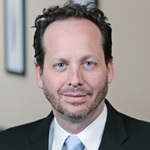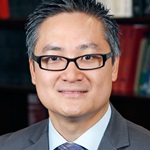Geraldine’s Story: Grateful For Speedy, Advanced Stroke Care
Geraldine and Lowell Threewits were eating lunch at their rural Darke County farm, just like they’d done countless times in their decades of marriage.
Suddenly, Geraldine began to fall off her chair.
“I caught her,” says Lowell, who immediately called 911 from the phone next to them and held onto his wife until medics arrived within 20 minutes. In the meantime, he was able to call their son and grandson who live nearby.
Geraldine was rushed to Wayne Hospital in Greenville, where her doctors connected with doctors in Dayton via the Premier Health Telestroke network.
“There was a male doctor who was helping decide what to do with her. He said they had a shot they give that helps stroke victims. I said go ahead. It made me feel better. Probably 10 years ago, she would be dead,” Lowell recalls. The doctor was Robb Snider, MD, who appeared from Miami Valley Hospital via the TV screen as part of the Telestroke network of hospitals.
The shot was tPA, a clot-busting medication given through a vein. Geraldine received the treatment, then was transferred to Miami Valley Hospital for an endovascular thrombectomy.
“This medication is associated with improved outcomes, and the sooner it is given, the better the outcome,” Esteban Cheng-Ching, MD, a neurologist with the Premier Health stroke team, says of tPA.
In Geraldine’s case, the tPA was administered in 21 minutes — a record time for the hospital, he said.
At Miami Valley Hospital, a catheter was navigated to a blood vessel in the brain where the clot was located, Dr. Cheng-Ching says.
“We have devices that are designed to open the blood vessel and remove the clot, and therefore restore the blood flow. That is what we did. Restoring the blood flow to the brain led to her having an excellent recovery and outcome,” he says.
Geraldine’s case was a first for Miami Valley Hospital for inserting the catheter through the wrist instead of the groin during the endovascular thrombectomy.
Geraldine said she recalled little of her medical incident. “All of a sudden, I kind of went numb. I knew I was losing my balance and that was when I quit remembering anything,” she says. She saw her son and grandson standing by the door as paramedics took her from her home.
“After that, I didn’t know anything until the helicopter was setting down in Dayton,” she says. “I didn’t know the gravity of it and what was going on until later.”
Geraldine’s road to recovery was not short. The stroke affected the right side of her body and movement. As she awaited rehabilitation, an unrelated medical issue was found, and surgery performed. Her rehabilitation included time at Upper Valley Medical Center’s inpatient rehab unit.
The Threewitses said they were overwhelmed by the support of family, friends, and the local community. Lowell notes Geraldine was on three different church prayer chains at one point.
The Threewitses, both in their 80s, met while high school students and married at 19. They have been married more than 65 years.
She was among stroke survivors celebrated last year by Premier Health. Although time has somewhat limited the Threewitses in pursuing their interests, such as travel in their camper, they said they plan to continue to live life to the fullest at their farm despite some limitations. They are thankful for Geraldine’s care.
“They knew what they were doing. We appreciate people who take on that career because it’s just not everybody who can do this sort of thing,” Geraldine says of her caregivers. “There is a personality inside these people that you cannot define. I am glad we have people like that.”


Contact Us
Our specialists are ready to help you get back to the things that matter most in your life. Find a provider near you or consult our list of related practices.
Our specialists are affiliated with:

